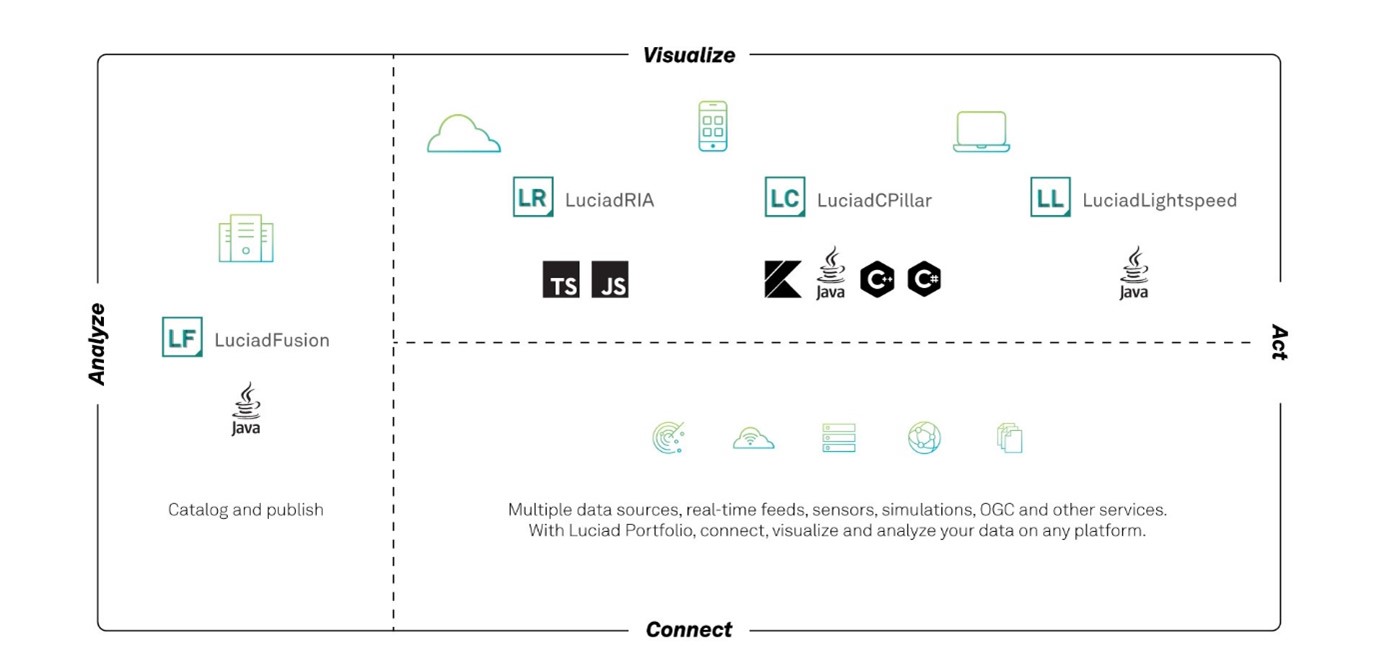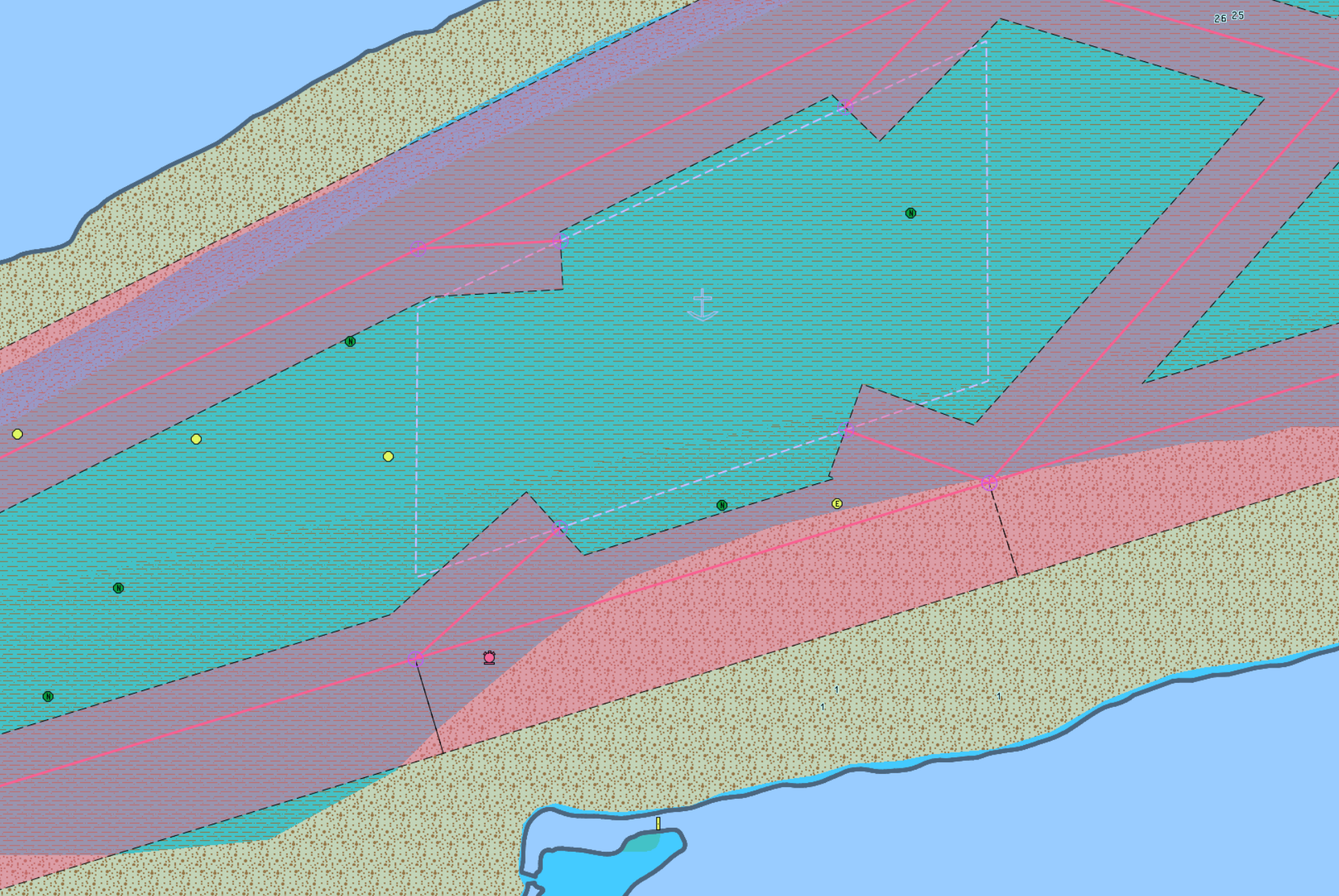About this release
This 2023 release of LuciadFusion features access control for protecting sensitive data. Moreover, it adds support for WMS and WMTS named styles. Additional Military Layers (AML) version 3 data can now also be decoded and correctly visualized according to STANAG 7170. Finally, this release includes important security upgrades and bundles a rich set of smaller enhancements, all based on your feedback.

Benefits of the new features
Rest assured with LuciadFusion
The main goal of LuciadFusion is to make managing and serving geospatial data easy. End users can easily access and readily visualize the data served by LuciadFusion in 2D and 3D on clients running OGC-compatible applications. If your geospatial data is sensitive, you can now use access control to restrict access to geospatial data published by LuciadFusion services.
You can configure access to data resources by granting permissions to a role for a data resource. Available permissions are read, update, delete, and manage. Permissions for products will be derived from the data resources contained in a product. A user can always access a service, but it will only offer products that a user can access. For example, the service capabilities request will only advertise the data layers the requester can access.
This figure illustrates the concepts of data source, product and service and their relationship.

Articles to get you started
The new article Access Control in LuciadFusion summarizes the new capability.
Support for WMS and WMTS named styles
The OGC specifications for WMS and WMTS allow for “named styles” or “server-advertised styles”. Both represent a choice of styles that the client can use to specify to the service how to return the requested WMS or WMTS map.
The LuciadFusion WMS Java API already offered support for named styles. Now this is supported in LuciadFusion platform and available via the REST API, for both the WMS and WMTS protocols.
After a style has been added using the REST API (including metadata properties like name, title, and abstract), it will be advertised via the WMS or WMTS capabilities and is available for use within requests to the service.
Minimum supported Java version
For many years, we have fixed the minimum supported Java version for LuciadFusion to 8. With this release, we would like to give an advance notification that the LuciadFusion 2023.x releases will be the last releases supporting Java 8. For the LuciadFusion 2024 releases, we plan to raise the minimum version to Java 17. We will continue to support both the Oracle JDK and OpenJDK.
Going forward, we aim to support the latest Java LTS version in our latest release. The minimum JDK/JRE requirements will never change with a minor upgrade — an upgrade from 2022.0 to 2022.1, for instance — or with a patch release of LuciadFusion. This also applies to LuciadLightspeed.
If you have any further questions or feedback on this topic, please contact the Luciad Product Management team at product.management.luciad.gsp@hexagon.com.
Articles to get you started
The documentation on Hardware and software requirements includes a new section that describes our policy and includes an overview of the supported Java versions for the various LuciadFusion product versions.
Obfuscation of your deployed application is now optional
As a final step in developing a LuciadFusion application, you can obfuscate the code. This is an optional step that can bring several benefits for your application:
-
Protection of the source code of an application from reverse engineering.
-
Reduction of application footprint. Obfuscated names are shorter and can significantly reduce the application footprint. Obfuscation programs, such as ProGuard, also allow for other optimizations. One example is “shrinking” which removes unused byte code. This can also drastically reduce the application footprint.
As of June 2023, this obfuscation step is optional.
Articles to get you started
The deployment instructions for LuciadFusion platform have been updated to reflect the changed policy for obfuscation.
Security upgrades
This 2023.0 release of LuciadFusion includes many security upgrades. The release notes provide full detail on the upgraded, removed, and added dependencies.
The Spring Boot dependencies of LuciadFusion have been upgraded from version 2.1 to version 2.7. This newer version brings numerous new features and fixes. As a result of this upgrade, many dependencies also received an upgrade. We refer to the release notes for the full list of libraries and version numbers.
Improvements for customers in the maritime domain
Additional Military Layers (AML) is an S-57 product used for the encoding of military nautical data. Typically, this data is combined with the ENC data, also encoded in S-57.
With this 2023.0 release, LuciadFusion extends its support to include AML v3. This includes support for data following the AML v3 domain model and visualization as defined in STANAG 7170.

LuciadFusion now also applies the proper scale ranges for the levels in the AML cell files that are in a CATALOG.031. Before, AML data had no scale range. Usually, these scale ranges are beneficial to your application, both to reduce loading
time and to reduce visual clutter. For details, see TLcdS52DisplaySettings.getScaleDenominators.
Articles to get you started
Because this is an update to an existing feature, the article What are S52, S57, S63, IENC and AML? has been updated to reflect the changes.
Other improvements
- Comparing queried custom metadata properties
-
The LuciadFusion capability for querying based on custom metadata properties has been extended. You can now compare custom properties when querying data.
- ECW model decoder upgrade
-
The
TLcdECWModelDecoderhas been upgraded to use ERDAS ECW JP2 SDK 6.1. - AIXM 5.1 holding patterns on WMS and WMTS maps
-
AIXM 5.1 holding patterns are now visualized in WMS and WMTS maps, with an oval icon that aligns with the turn direction and inbound course.
 Figure 4. AIXM 5.1 holding pattern.
Figure 4. AIXM 5.1 holding pattern.